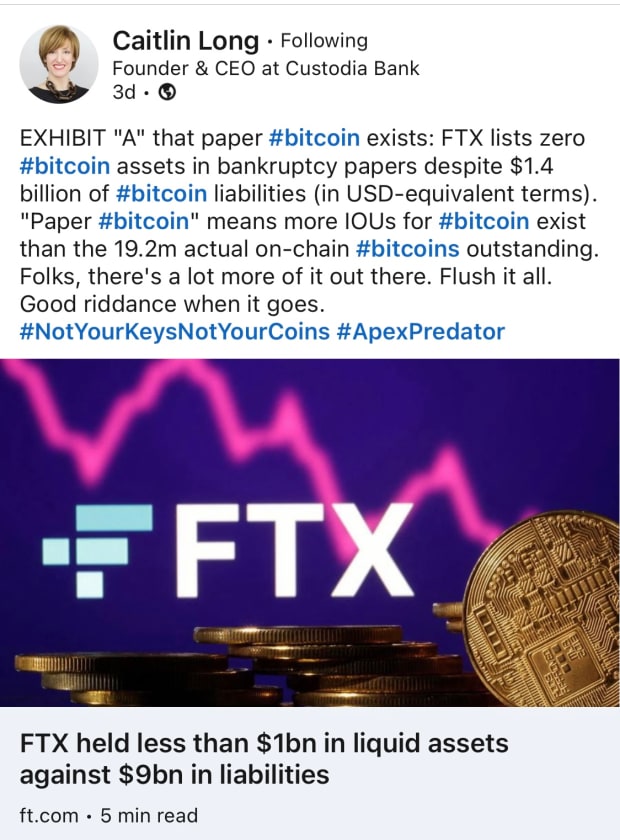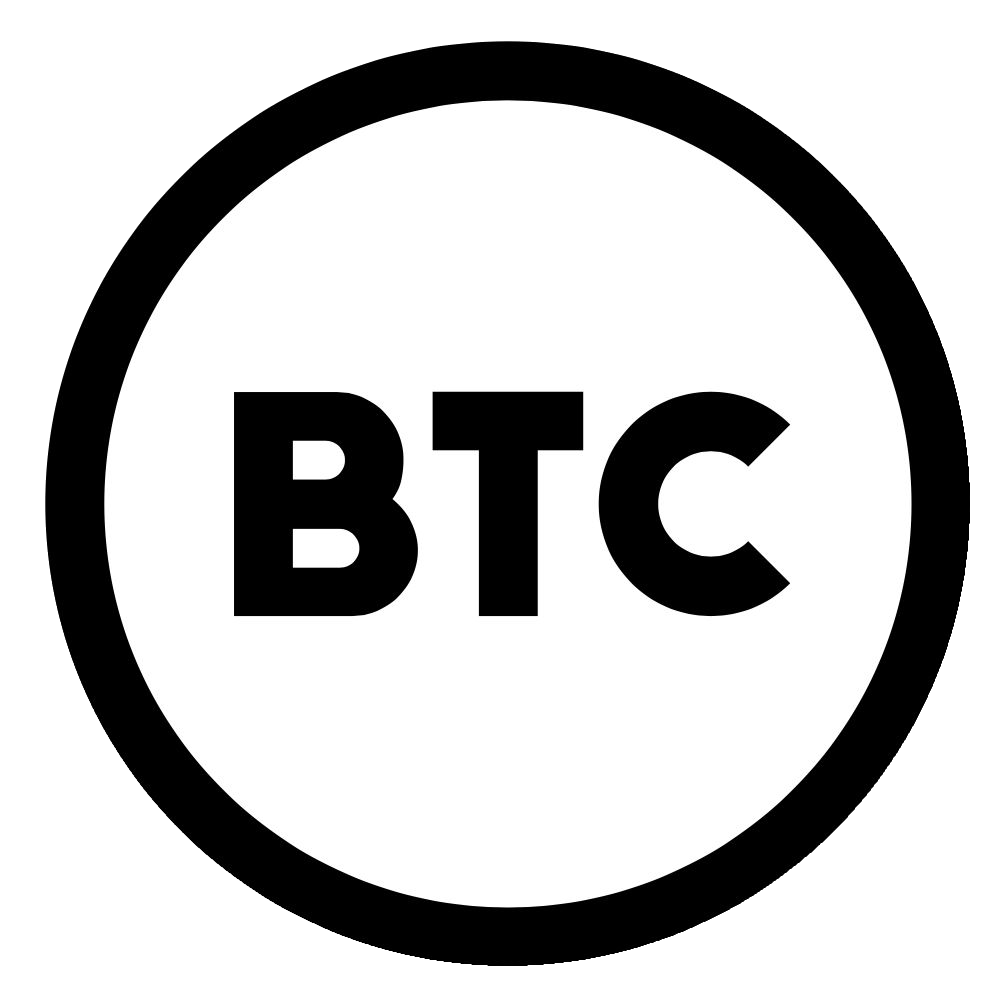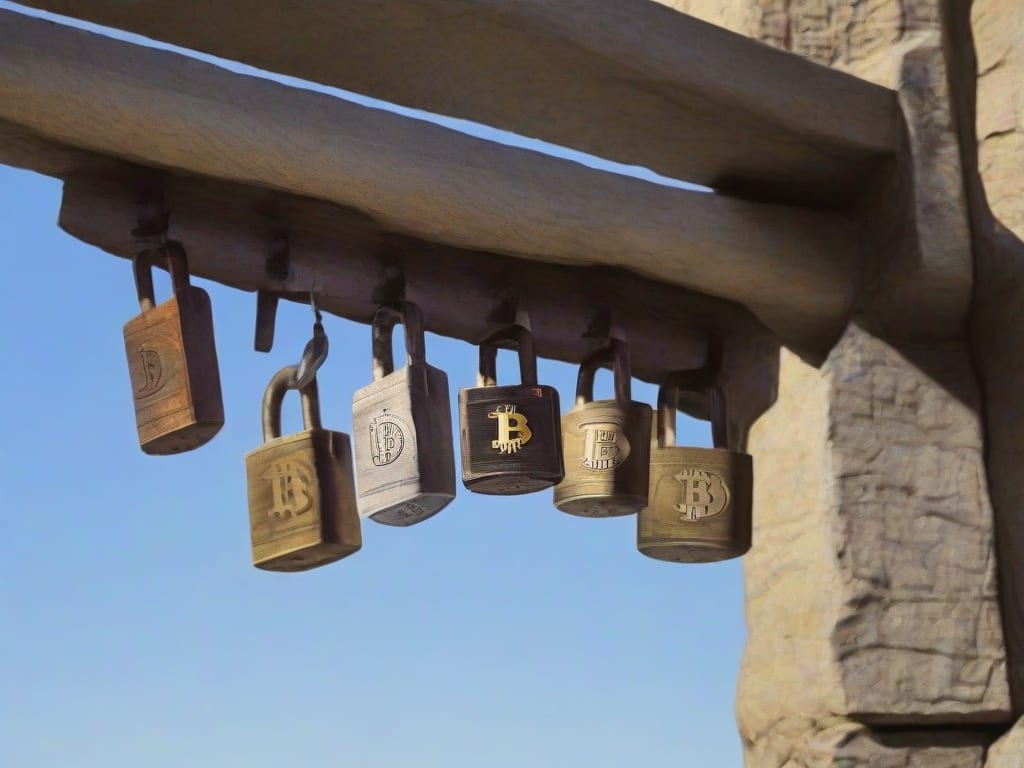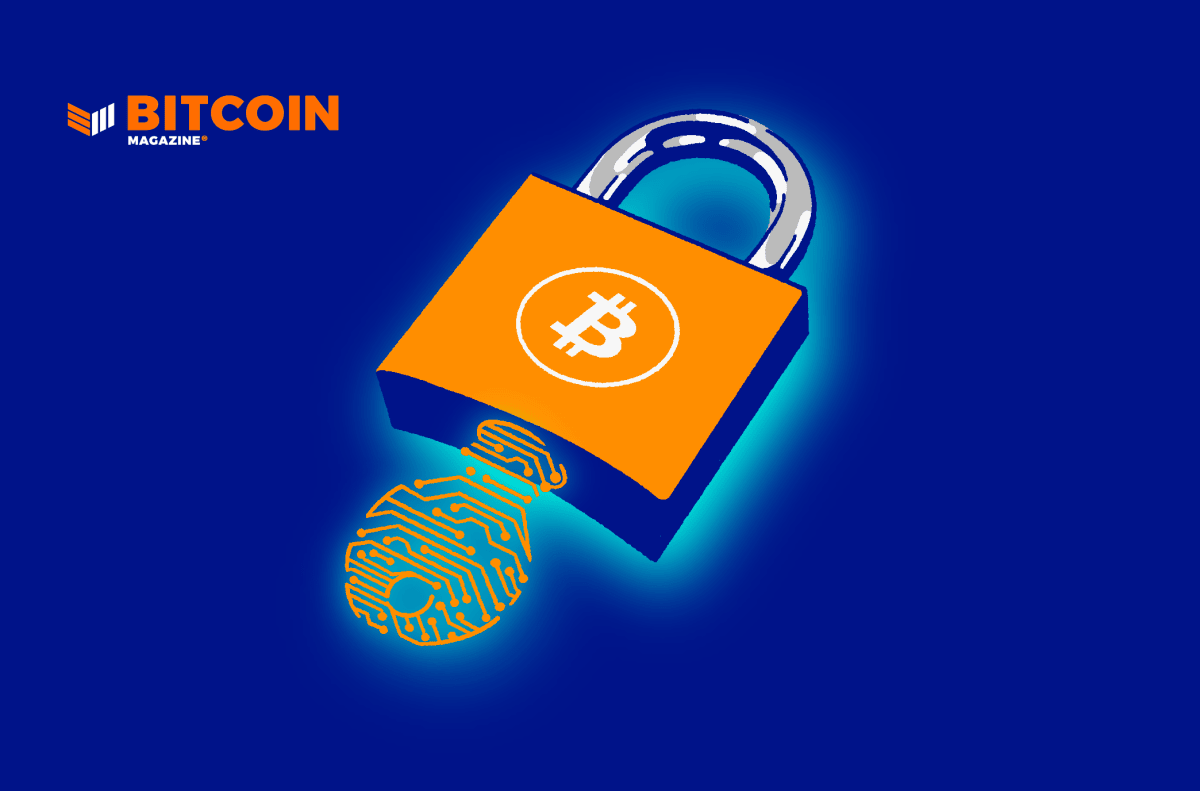In Light of Tether’s Fractional Reserve, a Shadow of Fiatcoins’ Future

Tether has taken a lot of heat for admitting it is running a fractional reserve. There’s no doubt that Tether’s unregulated nature makes this approach risky and that its lack of transparency is unsettling, but the entire modern banking system is architected on fractioned assets.
And Tether is not the only stablecoin that admits that it is backing its tokens with cash and “equivalent assets”; all of its competitors state in their terms of use that they can (and/or do) back tokens with cash-like investments, like government treasury bonds or other securities.
So, are these stablecoins any different than the legacy banking system? In practice, they act the same, but in structure, operations and regulation, they are still largely untamed.
Depending on your take, the news of Bitfinex drawing on Tether’s reserves to cover $850 million in losses — and the follow-up news that Tether is running a 74 percent fractional reserve — was either a spicy bombshell or a blandish nothingburger.
It’s either fraud and insolvency or good faith and responsible operations; proof that the writing is on the wall or that business is being conducted as usual. At the very least, both sides likely agree, it’s fiat banking in a nutshell.
But it was never anything else in the first place. And, moreover, Tether isn’t the only stablecoin with the gumption to run a fractional reserve; many of its competitors have terms of use that grant them this leeway and, while they’ve been more transparent about this fact than Tether from the start, this dependency on fractional reserves has been largely shrouded by Tether hogging the limelight.
In Tether’s shadow, however, rising competitors have shown that they’re more like the top stablecoin — and the precedent it is setting for crypto-banking practices — than they’d care to admit.
Wildcat Banking for the Digital Age
By its very nature, Tether — and other stablecoins like it — have always relied on the old model. That investors are buying into a fractional reserve system with notes that exist in another fractional reserve system is not lost on its defenders. The irony, to them, is that people are worried that Tether is not fully backed, but they don’t seem to worry that their own dollars in the legacy system run the same risk.
As Coinmetrics Analyst and Castle Island Ventures Partner Nic Carter summed it up on Twitter, banks are conducting the same business with “far lower capital ratios than tether has.”
There’s some nuance to extrapolate here, however, in that banks are fully regulated and they (typically) invest capital in highly liquid assets. To back its $900 million revolving credit from Tether, Bitfinex and Tether’s parent company, DigiFinex, collatralized this debt with 60,000,000 shares in itself. This type of incestuous lending raises the questions: How sound is this collateral and how legitimate is the underlying loan?
Carter told Bitcoin Magazine that Tether and Bitfinex “definitely concealed the risk of the loan” when they failed to disclose the credit/shares swap to their users. Seeing as DigiFinex represents both Tether and Bitfinex, which means that the exchange basically took out a loan from itself against its own shares, Carter said that the deal is “worryingly recursive — the value of DigiFinex declines as Tether risks insolvency, causing the collateral to be worth less.”
Banks underwrite assets with liabilities all of the time, Ellie Frost, a former investment banker at Deutsche Bank-turned cryptocurrency professional, told Bitcoin Magazine. Using liquid assets such as securities, government bonds and the like to generate capital in the form of debt is the backbone that makes modern banking possible and currencies elastic, the only difference being that these practices are regulated and are done with a greater degree of transparency than Bitfinex’s deal with Tether.
For instance, intercompany loaning like the $900 million Bitfinex-Tether deal isn’t uncommon in traditional banking, but Frost noted that “a loan connected to a subsidiary would immediately be flagged, have extra vetting and would likely have to go through shareholder approval on the company’s end.” This loan also circumvented the usual risk procedures and “credit process” that banks conduct when signing off on a loan.“There is incredibly stringent regulation around practices like this (particularly post-2008, when banks so royally screwed up their risk management around derivatives like CDOs [collateralized debt obligations]) and banks have shareholders to be held accountable to,” Frost told Bitcoin Magazine. “Banks not only release filings, but every single large debt obligation that is loaned out via investment banking goes through multiple regulation procedures.”
“We need to be clear this is institutional, not retail banking,” she added, regarding Bitfinex’s actions to cover up the missing $850 million. Bitfinex used customer funds from Tether to pump additional capital into itself without any “of the transparency that is associated with typical retail customer’s investments” or the regulations for capital requirements that banks adhere to.
“It isn’t uncommon for parent companies to bail out subsidiaries,” Frost concluded. “However, you cannot truly compare [Bitfinex/Tether] to a bank because they lack the risk management and regulations.”
So what Tether has done isn’t out of the ordinary for modern banking — but it is a scrappy, less “legitimate” version of it. The question remains, then, could more stablecoins bring this age-old banking model into maturity within the crypto ecosystem?
The Stablecoin Mold
The answer is a mixture of “they will,” and “they already have.” Though Frost argued that, “it isn’t fair to compare the two” for the same reasons that Tether’s banking is so dissimilar to traditional banking: there’s zero regulation.
Still, if you look at the terms of use of Tether’s most popular fiatcoin competitors, they all qualify that their backing is both in cash and reportedly “highly liquid” cash equivalents. Even if they are largely un- (or under-) regulated, their reserves may not be wholly cash-backed.
Poloniex parent company Circle and Coinbase’s stablecoin USDC, for example, “is fully backed by U.S. Dollars or equivalent assets held by Circle with its U.S. banking partners in segregated accounts, on behalf of, and for the benefit of, Users.” The actual benefit here may be up for debate, because, per the terms, “Circle, not the Users, will earn interest on the U.S. Dollars or equivalent assets in such accounts.”
Earning interest and dividends on customer deposits is the business of banks; after all, money isn’t put to work if it’s sitting in one place, so banks invest it to make revenue, some of which (though an arguably paltry amount of around 2 percent in the U.S.) goes back to customer savings accounts.
Most all fiatcoin issuers make no such promises of interest for their customers. Winklevoss-owned Gemini notes that its GUSD “is strictly pegged 1:1 to the U.S. dollar … correspond[ing] to a U.S. dollar held across one or more omnibus bank accounts,” though “the monies within which are used to purchase money market funds invested in securities issued or guaranteed by the United States or certain U.S. government agencies or instrumentalities.”
The Paxos Standard is the same as well, with its terms of use stating that the “Paxos Trust Company provides cash management for the U.S. dollar deposits backing PAX so that each PAX is backed by an equivalent amount of US dollar deposits or US Treasury bonds.”
TrustToken claims that “each TrueCurrency token is backed by an equivalent amount of fiat deposits,” but that it may “utilize sweep accounts that can protect the deposits through overnight investments in U.S. Government Treasuries” and that, for its GPB equivalent, “U.K. Government Treasuries may be utilized for GBP deposits.”
Sometime after Tether established a credit line with Bitfinex, the stablecoin’s website updated its information to clarify that USDT is backed by “reserves … includ[ing] traditional currency and cash equivalents and, from time to time, may include other assets and receivables from loans made by Tether to third parties, which may include affiliated entities.” The last bit regarding loans from affiliated entities likely refers to the deal in question with Bitfinex.
The Old New Thing
On the surface, the reserves of Tether’s competitors are diversified with the clients in mind. At least, the common response I received when asking issuers why they held assets other than cash was one of risk mitigation.
“This is another measure we’ve taken to ensure nothing happens to the 100 percent reserves backing TrueUSD,” Tory Reiss, co-founder and head of business development at TrustToken, told Bitcoin Magazine. “There is a cap to FDIC insurance for USD and no FDIC insurance for non-USD fiat. Therefore, instead of relying on the solvency of banks, we decided to mitigate risk by relying on the solvency of governments.”
Paxos’ Global Head of Strategic Business Operations Nancy Dornbush also told us that, in line with Paxos’ “top priority to keep [its] customers’ funds safe,” the company “[secures] them with U.S. government obligations” which are “guaranteed by the full faith and credit of the United States government.”
USDC also “believe[s] that diversifying reserves across such asset classes allows for greater security of funds by mitigating individual bank failure as a risk factor,” according to Joao Reginatto, USDC’s product lead at Circle — though he added that USDC “is currently backed entirely by cash deposits.”
Like proper banks, these stablecoins have looked toward U.S. treasury bonds as safe harbors for liquidity because, as Frost put it, “Uncle Sam is on the line for that money at the end of the day.” These cash-like assets also help nourish their balance sheets for further growth.
“As reserve balances grow with increasing adoption of USDC, we plan to also hold reserves in highly liquid and low volatility assets such as U.S. Treasury Bonds,” Reginatto said regarding USDC’s plans. Reiss echoed this sentiment when he noted that as “TrueUSD scales, [government bonds] allow [its] protection of the funds to scale as well.”
Justified as it may be as protecting client deposits, this expansionary strategy has the reach and feel of an elastic banking policy. If funds are left sitting in an account, they make no money. But if you invest them, you can accrue revenue on deposits — and if these companies hope to scale, they’re going to need more than redemption/issuing fees to subsist.“I’m not surprised by stablecoins making other investments, but they are not transparent [and do not] give any say to ‘shareholders’ of the coin,” Frost said. “At the very least, they could be up front about what investments they do have and let retail investors judge for themselves if they are comfortable with the risk the coins are taking on.”
To be fair, they list in the terms of use that cash may be allocated into things like treasuries and securities, albeit they are vague about which ones. Each of these Tether alternatives also conducts monthly attestations to prove their reserves, all of which are public and conducted by reputable accounting firms.
But these are not official audits, which, more than just making sure that a company’s bank account is square, allow a firm to evaluate business practices to see how a company generates revenue and what its operations look like.
Paxos told us that it is internally audited by Grant Thorton LLP (which also runs attestations for USDC) and is externally audited by a Big Four firm. These audits, however, are not public, and none of the representatives from the other four stablecoins Bitcoin Magazine spoke with mentioned anything besides attestation reports.
It would also be unfair to compare these stablecoins to Tether. The regulatorily unfettered grandaddy of stablecoins is beholden to basically zero governmental oversight. On the contrary, Paxos and Gemini are subject to New York State Department of Financial Services trust laws and TrueUSD and USDC are federally registered as money services businesses with the Financial Crimes Enforcement Network.
These regulations certainly make these options “safer” than Tether to some, but Frost encourages potential investors to be more critical when evaluating whether or not any of these stablecoins are safe, while also advising for stablecoins to present more “transparency of their risk models and investments.”
Their regulatory legitimacy and corporate trappings may make them an attractive alternative to banks — and may even provide a presage of what the future of banking may look like — but she cautions that, though they may play the part of a bank, they still lack the substance that defines modern banking institutions.
“I in no way think that traditional banking is perfect, but I think that it is important that these stablecoin companies are upfront with their risks and do not try to compare themselves to these ‘safe’ institutional players,” Frost concluded.
This article originally appeared on Bitcoin Magazine.









